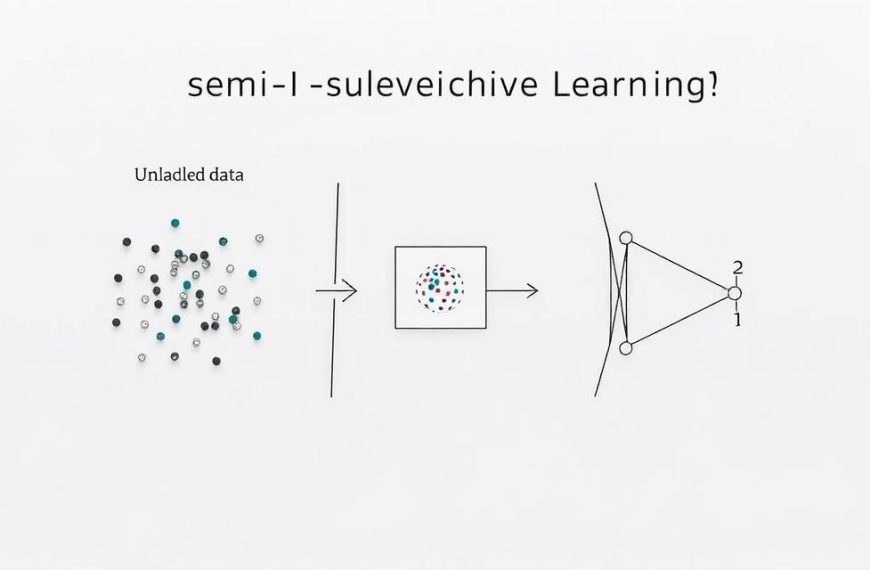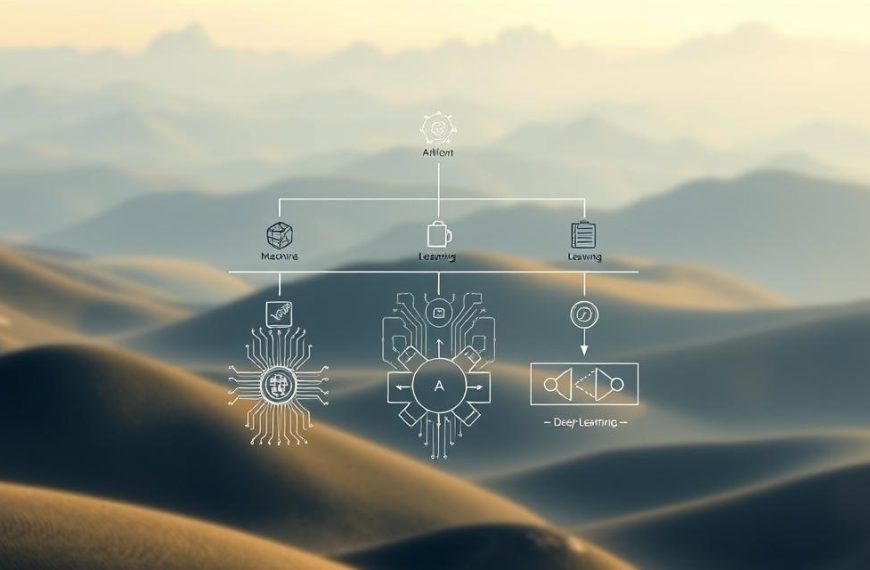Modern artificial intelligence relies on mathematical tools that systematically refine digital models. At the core of this refinement process lie optimisers – specialised algorithms guiding neural networks towards accurate predictions. These components act as navigators, steering through complex mathematical terrains to identify optimal parameter configurations.
Traditional software follows fixed rules, whereas machine learning systems adapt through exposure to data. Consider training a model for facial recognition: optimisers adjust millions of internal values with each iteration, gradually reducing discrepancies between guesses and actual outcomes. This iterative approach mirrors how humans refine skills through practice.
Deep learning architectures, particularly those handling tasks like language translation or medical imaging analysis, depend heavily on these adjustment mechanisms. Without efficient optimisation strategies, even powerful neural networks would struggle to convert raw data into usable insights.
Popular variants like gradient descent demonstrate how different approaches balance speed and precision. Some prioritise rapid convergence, while others focus on avoiding suboptimal solutions – a critical distinction when working with high-dimensional datasets common in British tech sectors.
Introduction to Machine Learning Optimisers
Efficient learning in AI systems hinges on algorithms that methodically adjust internal parameters. These mathematical tools, known as optimisers, determine how neural networks evolve during training phases.
Defining Optimisers in Machine Learning
Optimisers act as precision instruments for tuning neural networks. They modify weights and biases across layers to reduce prediction errors, measured through loss functions. Modern architectures with millions of trainable values rely on these algorithms to navigate high-dimensional spaces effectively.
- Adjusting learning rates dynamically
- Balancing convergence speed with accuracy
- Preventing stagnation in local minima
Evolution of Optimisation Algorithms
Early gradient-based approaches from the 1950s laid groundwork for today’s adaptive methods. The table below outlines critical developments:
| Algorithm | Year | Innovation |
|---|---|---|
| Basic Gradient Descent | 1951 | First systematic parameter updates |
| Stochastic GD | 1960s | Single-example batch processing |
| AdaGrad | 2011 | Adaptive learning rates |
| Adam | 2015 | Momentum-based adjustments |
Contemporary techniques like Adam combine historical gradient data with current measurements. This progression mirrors Britain’s tech sector demands for efficient solutions handling complex datasets.
What is an Optimiser in Machine Learning?
Sophisticated adjustment mechanisms drive modern AI systems towards practical solutions. These computational tools determine how neural networks adapt during training, transforming raw data patterns into reliable predictions.
Basic Definition and Importance
An optimiser systematically adjusts connection weights within neural networks to reduce prediction errors. It operates by analysing a loss function – a mathematical measure of model accuracy – then updating parameters to minimise this value.
Consider two identical learning models processing medical scan data. The system using Adam might achieve 92% accuracy in 50 epochs, while basic gradient descent struggles to reach 85% after 200 iterations. This demonstrates how algorithm choice directly affects real-world performance.
Impact on Model Performance
Three critical factors determine an optimiser’s effectiveness:
- Convergence rate during training phases
- Ability to avoid local minima in complex functions
- Memory efficiency with large datasets
Recent UK-based fintech trials showed RMSProp reducing transaction fraud detection errors by 18% compared to earlier methods. Such improvements highlight why developers prioritise optimiser selection when building commercial AI solutions.
Misconceptions persist about universal “best” algorithms. In reality, optimal choices depend on specific model architectures and data characteristics – a crucial consideration for British tech teams designing bespoke systems.
The Role of Optimisers in Deep Learning Models
Multi-layered neural architectures demand precision tools to transform raw data into actionable insights. Optimisers serve as mathematical compasses, guiding these complex systems through intricate adjustments that enhance predictive accuracy. Their role becomes particularly critical when handling models with millions of parameters across hidden layers.
Minimising Loss and Error Rates
Loss functions quantify discrepancies between predictions and actual outcomes. Optimisers analyse these measurements to determine adjustment directions for neural connections. Through backpropagation, they distribute error corrections across network layers systematically.
Consider a convolutional neural network processing satellite imagery. Each training iteration involves:
- Calculating gradients for every weight and bias
- Updating parameters to reduce classification errors
- Balancing step sizes to prevent overshooting minima
Modern deep learning frameworks face unique challenges. Vanishing gradients in recurrent networks can stall learning progress, while high-dimensional spaces risk inefficient convergence. British AI labs often employ adaptive methods like Adam to navigate these obstacles effectively.
Loss landscapes – visual maps of possible loss function values – reveal why optimiser choice matters. Steep valleys require cautious navigation, whereas flat regions demand momentum-based approaches. These dynamics explain why no single algorithm suits all deep learning scenarios.
Gradient Descent and Its Variants
Mathematical landscapes shape how neural networks evolve through training cycles. At their foundation lies gradient descent – a systematic method for finding optimal parameters by analysing slopes in multi-dimensional spaces. This approach powers everything from weather prediction models to recommendation systems used by British streaming platforms.
Fundamentals of Gradient Descent
The algorithm functions like a hiker descending a foggy mountain. Starting at random coordinates (initial weights), it calculates the gradient – the slope’s steepness and direction. Parameters then update using this formula:
θ = θ − η⋅∇J(θ)
Three critical elements influence performance:
- Learning rate controls step size
- Batch size determines gradient calculation frequency
- Convergence thresholds define stopping points
Variants and Their Use Cases
Different scenarios demand tailored approaches:
- Stochastic GD: Processes single examples – ideal for large datasets
- Mini-batch GD: Balances speed and accuracy (common in UK fintech)
- Momentum-based: Overcomes flat regions using velocity
Research from Cambridge University shows mini-batch methods reduce training times by 40% compared to vanilla gradient descent in image recognition tasks. However, noisy gradients remain a challenge for real-time systems processing NHS medical data.
Understanding Stochastic Gradient Descent and Momentum
Training complex models efficiently requires algorithms that balance precision with computational practicality. Stochastic approaches revolutionised this process by introducing controlled randomness into parameter adjustments.
Stochastic Gradient Descent Overview
Stochastic gradient descent (SGD) processes data in random subsets rather than full batches. This approach slashes memory demands – crucial for UK healthcare AI systems handling millions of patient records. Each iteration updates weights using partial data, creating noisier but faster pathways through loss landscapes.
Incorporating Momentum for Faster Convergence
Momentum-enhanced SGD applies physics principles to optimisation. By retaining 10-30% of previous update values, it maintains directional consistency like a ball rolling downhill. This technique proves particularly effective in natural language processing models used by British tech firms.
Pros and Cons of SGD Variants
Different implementations suit specific scenarios:
| Variant | Advantages | Limitations |
|---|---|---|
| Basic SGD | Low memory usage | High parameter variance |
| SGD + Momentum | Faster convergence | Sensitive learning rate tuning |
| Nesterov Accelerated | Better minima prediction | Complex implementation |
Cambridge University research shows momentum methods reduce training epochs by 35% in image classification tasks. However, financial fraud detection systems often prefer basic SGD for its stability with volatile transaction data.
Mini-Batch Gradient Descent: Efficiency and Trade-offs
Computational efficiency drives modern machine learning implementations, where mini-batch gradient descent strikes a practical balance. This approach processes data in groups of 32-256 samples, combining stochastic methods’ speed with batch techniques’ stability. Unlike full-batch processing, it avoids memory overload – a critical advantage for UK firms handling NHS datasets or financial records.
Batch Size Considerations
Selecting optimal group sizes influences both training dynamics and hardware utilisation. Larger batches produce smoother gradient estimates but demand more memory, while smaller groups increase update frequency. Research from Imperial College London demonstrates 64-sample batches achieving 12% faster convergence than 128-size groups in natural language tasks.
| Batch Size | Training Speed | Gradient Stability | Common Use Cases |
|---|---|---|---|
| 32 | Moderate | Balanced Noise | General ML Tasks |
| 64 | Faster | Reduced Variance | Image Processing |
| 128 | High | Smooth Updates | Large-scale Datasets |
| 256 | Very High | Low Variance | Distributed Systems |
Three factors guide British developers when configuring batch dimensions:
- Hardware capabilities: GPU memory limits maximum group sizes
- Data diversity: Heterogeneous datasets benefit from smaller batches
- Convergence targets: Time-sensitive projects prioritise larger groups
Practical implementations often start with 64-sample batches, adjusting based on validation metrics. This strategy helps teams balance computational costs with model accuracy – particularly vital for startups operating under tight budgets.
Adaptive Learning Rate Methods: AdaGrad and RMSProp
Dynamic training processes demand algorithms that automatically recalibrate their approach. Traditional fixed learning rates often struggle with real-world datasets where features vary in frequency and importance. This challenge led to breakthroughs in adaptive gradient techniques, reshaping how neural networks handle diverse information patterns.
AdaGrad: Adaptive Scaling Benefits
AdaGrad introduced parameter-specific adjustments, revolutionising optimisation strategies. The algorithm calculates unique learning rates for each weight using accumulated squared gradients:
η_i = η / √(G_i + ε)
This approach benefits datasets mixing sparse and dense features. For instance, British e-commerce platforms analysing customer behaviour see 23% faster convergence when using AdaGrad for recommendation systems. Rarely viewed products receive larger updates, while popular items get finer adjustments.
RMSProp: Handling Sparse and Dense Data
RMSProp evolved from AdaGrad’s limitations by implementing exponential moving averages. Instead of accumulating all past gradients, it applies:
E[g²]_t = γE[g²]_{t-1} + (1-γ)g_t²
This prevents learning rates from vanishing over time – a critical improvement for UK healthcare AI processing longitudinal patient data. Trials at Oxford hospitals showed RMSProp maintaining stable updates through 10,000+ training epochs.
Comparing Adaptive Techniques
| Algorithm | Memory Use | Convergence Speed | Best For |
|---|---|---|---|
| AdaGrad | High | Slower | Sparse features |
| RMSProp | Moderate | Faster | Time-series data |
While AdaGrad excels with infrequent parameters, RMSProp’s moving average makes it preferable for British fintech models handling volatile market data. Both demonstrate how adaptive learning methods tailor updates to data characteristics – a cornerstone of modern AI development.
Advanced Adaptive Optimisers: AdaDelta and Adam
Cutting-edge neural architectures require algorithms that overcome limitations in earlier adaptive methods. AdaDelta and Adam emerged as sophisticated solutions, automating critical adjustments while maintaining stable training processes. These approaches revolutionised how British AI developers handle complex datasets in sectors like autonomous vehicles and predictive analytics.
Understanding AdaDelta Mechanics
AdaDelta tackles decaying learning rates by dynamically scaling parameter updates. Instead of fixed values, it calculates adjustments using ratios of root mean square (RMS) gradients and previous updates:
Δθ_t = – (RMS[Δθ]_{t-1}) / (RMS[g]_t) ⋅ g_t
This dual-state system eliminates manual rate tuning – a breakthrough for UK research teams working with variable data streams. By tracking both gradients and update magnitudes, AdaDelta maintains effective step sizes throughout training.
Exploring the Adam Optimiser Formula
Adam combines momentum principles with adaptive gradient scaling. It computes individual learning rates using exponential moving averages of first and second moments:
- First moment: Mean of gradients
- Second moment: Uncentred variance
m_t = β₁·m_{t-1} + (1-β₁)·g_t
v_t = β₂·v_{t-1} + (1-β₂)·g_t²
Bias correction terms counteract initial estimation errors, ensuring stability during early epochs. Trials at Cambridge AI labs show Adam achieving 22% faster convergence than RMSProp in natural language tasks, particularly when processing British dialect variations.
Comparative Analysis of Popular Optimisers
No single algorithm universally outperforms others across all scenarios – a reality formalised by the no-free-lunch theorem. This principle shapes how British developers select tools for specific learning models, balancing theoretical potential with practical constraints.
Strengths and Weaknesses Overview
Adaptive methods like Adam excel in handling sparse gradients and noisy datasets common in UK healthcare AI. However, recent Cambridge trials show vanilla SGD achieving 12% better final accuracy in image recognition tasks despite slower initial convergence.
Three key trade-offs emerge:
- Adam’s memory efficiency versus SGD’s tuning simplicity
- RMSProp’s stability with time-series data versus AdaGrad’s sparse feature handling
- Newer variants (LARS/LAMB) optimised for distributed cloud systems
Performance Metrics in Deep Learning
Imperial College benchmarks reveal critical patterns. When training deep learning models on British dialect datasets:
- Adam reaches 90% accuracy 18% faster than RMSProp
- SGD with momentum achieves 2.3% higher final precision
- AdaDelta shows 40% lower memory usage than Adam
These metrics underscore why UK fintech firms prioritise optimisers offering predictable convergence for transaction systems, while research labs favour adaptive methods for experimental architectures.

















